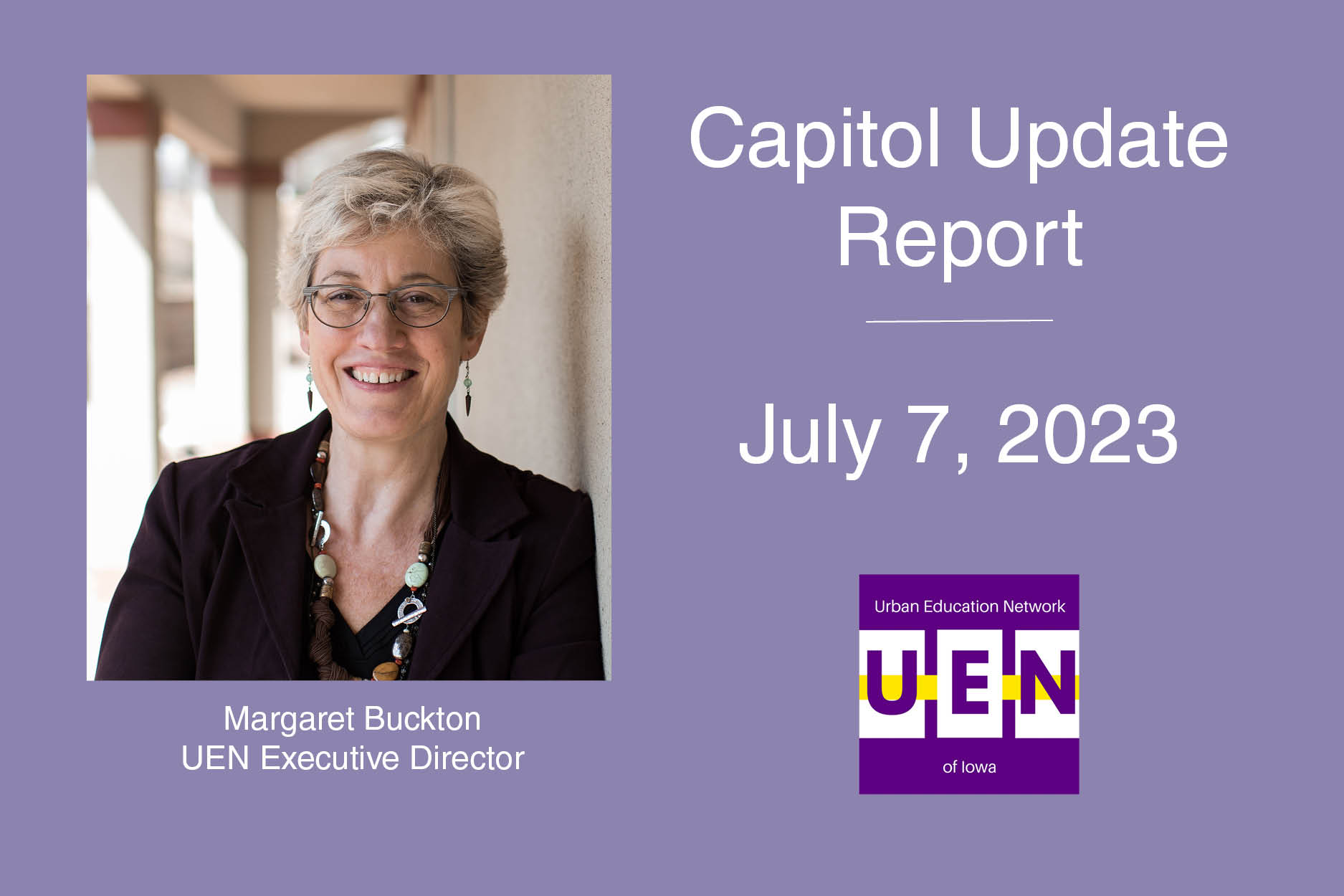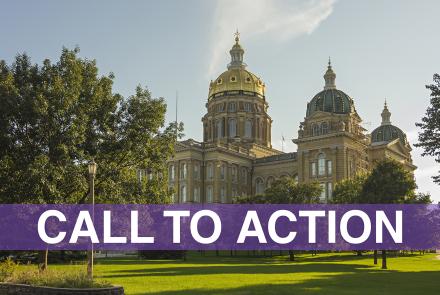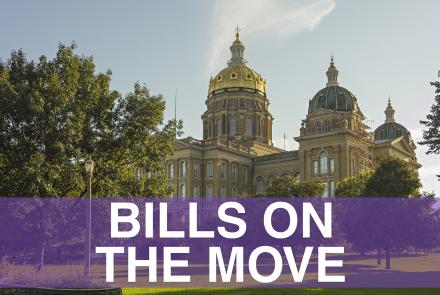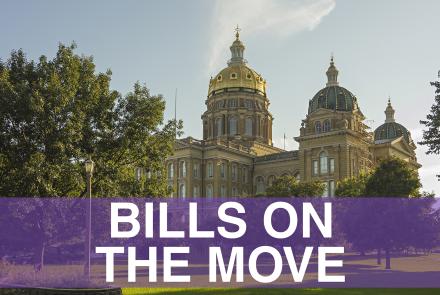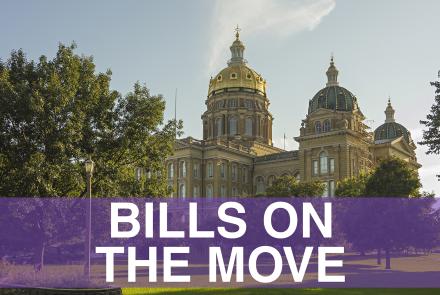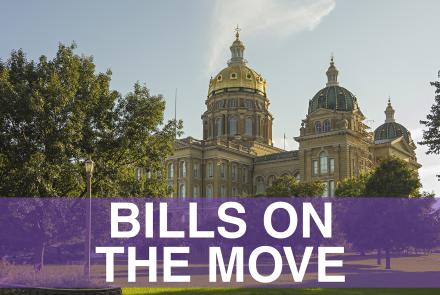Capitol Update - July 7, 2023
UEN Legislative Update
July 7, 2023
Download the printer-friendly version of the 07/07/2023 - UEN Legislative Update
Update on Education Savings Accounts
The Governor has released information about the first round of applications for education savings accounts which is reported in today’s media. Below, we have a summary of the statistics from the Governor’s press release and the Des Moines Register. We also have some other data and things to think about regarding the potential impact on your district and some advocacy messages. If you are contacted by media or your legislators, this information will help you respond.
“Tremendous Response”
Des Moines Register 7/1/2023
https://www.desmoinesregister.com/story/news/politics/2023/07/06/more-than-29000-applied-for-iowa-private-school-education-savings-accounts-kim-reynolds-esa/70383940007/
- More than 29,000 Iowa students applied for an ESA, and more than 17,000 have been approved, Gov. Kim Reynolds said Thursday. More than half of the applicants already attend private schools (other sources reported 40% were coming from public school).
- The state has until July 31 to approve or deny the pending 12,000 applications. The numbers far exceed state projections that just 14,068 students would be approved to receive ESAs this year.
- Funding every application that has already been approved would cost the state $133.5 million. That number will rise as more applications are approved.
- But the money will be given out only if the student is separately accepted to attend a private school. The governor's office said private schools around the state have reported that there are roughly 9,000 spots available for private school students, meaning there could be more students approved for ESAs than there are spots available in private schools.
- The state's budget for the coming fiscal year includes $107.4 million to fund the program. The state has said every approved account will be funded.
- 60% of the 17,481 approved applications (10, 489) are for students who already attend an accredited private school, while 40% are for students planning to move from public to private school this year (6,992). The 40% includes incoming kindergartners.
- Current private school students are eligible the first year only if their families have a household income at or below 300% of the federal poverty guidelines. That's about $90,000 for a family of four.
- According to the state, the average net household income for applicants moving from public to private schools is $128,500, while the average net household income for current private school applicants is $62,200.
- 14% of applicants have household incomes below 100% of the federal poverty guidelines (below $30,000 for a family of four).
- 31% of applicants have household incomes between 101% and 200% of the federal poverty guidelines ($30,000-$60,000 for a family of four).
- 36% of applicants have household incomes between 201% to 300% of the federal poverty guidelines ($60,000-$90,000 for a family of four).
- 19% of applicants have household incomes above 300% of the federal poverty guidelines ($90,000 for a family of four).
- Impact on public school enrollment and demographics will not be known until enrollment is counted this fall.
Some things to think about:
DE’s Annual Condition of Education Report last November tracks and projects public and nonpublic enrollment.
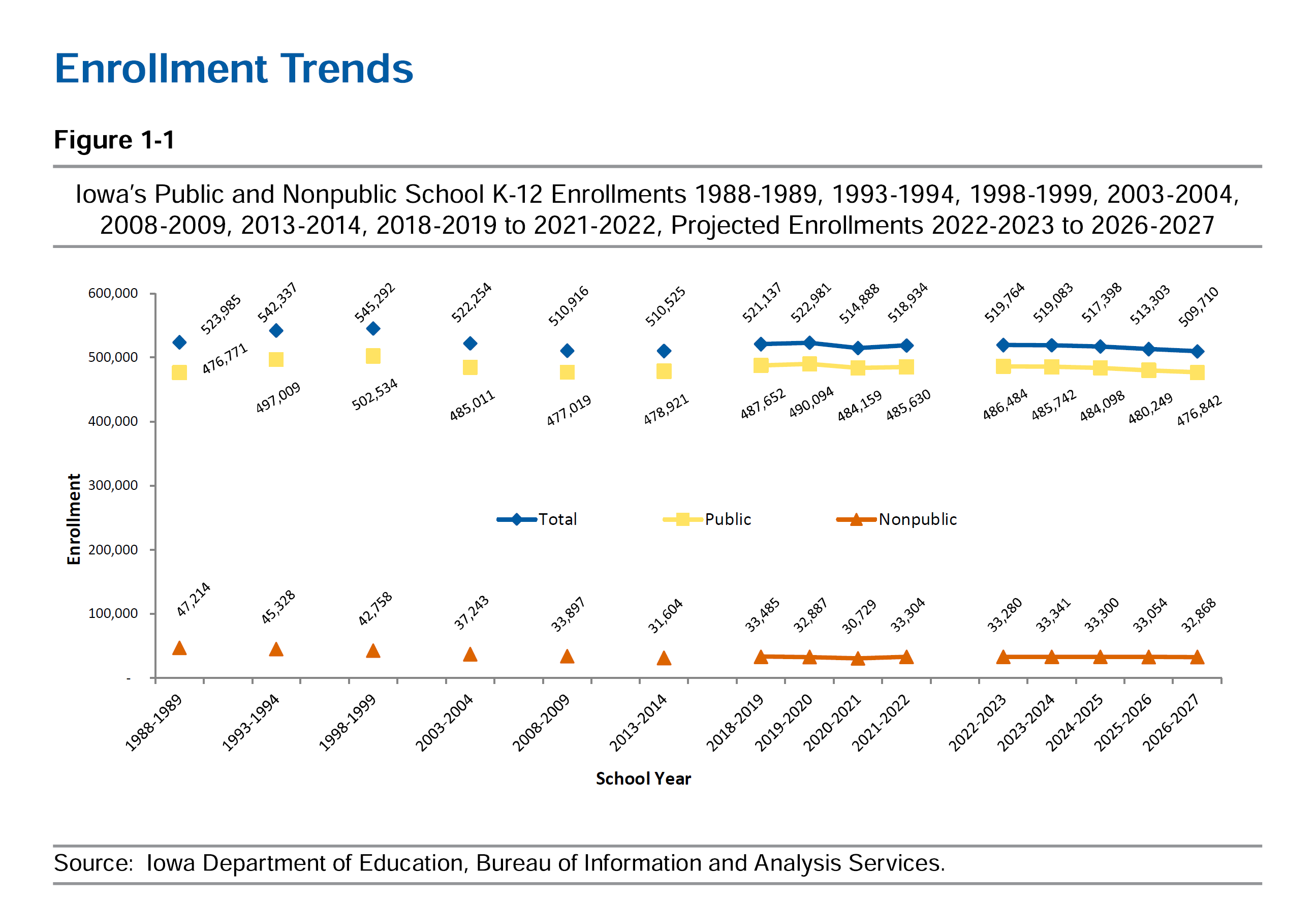
- ESA application activity is on par with other state’s experience, that between 15-25% of students receiving an ESA would have attended a private school anyway. The combination of kindergarten eligibility and income caps for phased eligibility would skew toward more applicants in this first go around not having attended private school last year.
- Private schools do not have to accept all applicants. Some do not have space or staffing for a large influx of students. Some may have other criteria they consider in accepting students.
- Kindergarten students served in nonpublic schools in the 2022-23 school year numbers 3,251. It makes sense to assume that every kindergarten family that would have attended a private school anyway applied for an ESA.
- HF 65 allows eligibility for any student not attending an accredited private school last year. Although the media has reported that 40% of applicants are coming from public school, some of these may have been home schooled or attended a nonaccredited private school or are new to Iowa this year. Some of these students may have open enrolled to a nonresident district last year. Every district’s local impact will vary.
- Public schools must be ready to manage expectations and unknown enrollment impacts.
- Some applicants will not get approved.
- Open enrollment applications during the year have no deadline.
- Some students who are accepted into an accredited nonpublic school will not stay there, if patterns of enrollment and attendance continue to follow experience. Public schools will accept those students as they return, but the money may not follow them for another year or two, depending on the date of return to public school.
- Fiscal Impact: The media continues to report the impact on public schools of a transferred student is a loss of $7,635 (less the $1,205 retained categorical funding per resident student that receives an ESA). In actuality, public schools lose more funding per transferred student than just the regular program district cost:
- Public schools will also no longer generate dropout prevention, instructional support or state penny for school infrastructure, on average a loss of over $10,100 per transferred student when these funds are added to the lost $7,635 state cost per pupil.
- Area Education Agencies will also lose funding currently generated through public school enrollment counts (Special education, media, education services) for an average of $465 less to AEAs per transferred student
- The net loss to the public education system, based on the LSA’s original assumption of 9,761 public school students receiving an ESA, even considering the $52.3 million retention of per pupil categorical funds for resident students, is a reduction of over $37 million. The losses will be concentrated in public school districts that already have accredited nonpublic schools within reach.
Advocacy Actions and Legislative Corrections
- Money should follow students back to public school if they return to public school, especially after the October 1 count date.
- There is an unlevel playing field, as private schools do not have to accept all students. Private schools are required to test ESA recipient students with state and federal mandated assessments. This is a good first step in accountability for taxpayer funded education. However, we expect private school students will likely score higher on average when taking state and federal tests since non-English speaking students, nonproficient students and students with special needs are less likely to be enrolled in private schools.
- We encourage DE to monitor enrollment and attendance, and report the incidence of students withdrawing (or being expelled) from private schools.
- Concentration of lower income, immigrant and minority students is expected to increase in public schools with large private schools in their neighborhoods. Iowa needs to consider a look at the school foundation formula to adequately fund public schools with high needs students.
- It’s time to evaluate traditional funding and support for private schools that did not change last year, despite the investment of state dollars into ESAs. The state currently spends over $8 million for private school transportation (that public schools additionally subsidize), $20 million for school tuition organization tax credits for scholarships for families below 400% of the FPL to attend private school (no longer necessary with the ESA program). These funds should be redirected to public school needs.
- Teacher and other education staff shortages are expected to continue. As private schools increase their ability to hire and compensate staff, the pressure for public schools to attract and retain quality staff will continue. Iowa must adequately fund public schools to ensure that all students have access to a great education.
Contact us with any questions, feedback or suggestions to better prepare your advocacy work:
Margaret Buckton, UEN Executive Director/Legislative Analyst
margaret@iowaschoolfinance.com
515.201.3755 Cell


